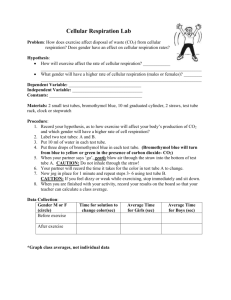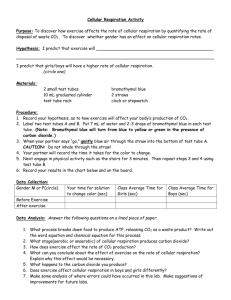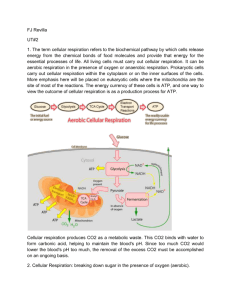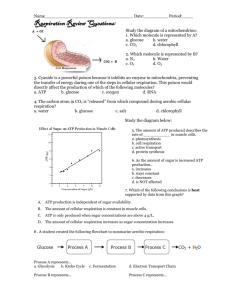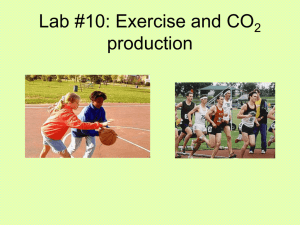Name Regents Biology
advertisement
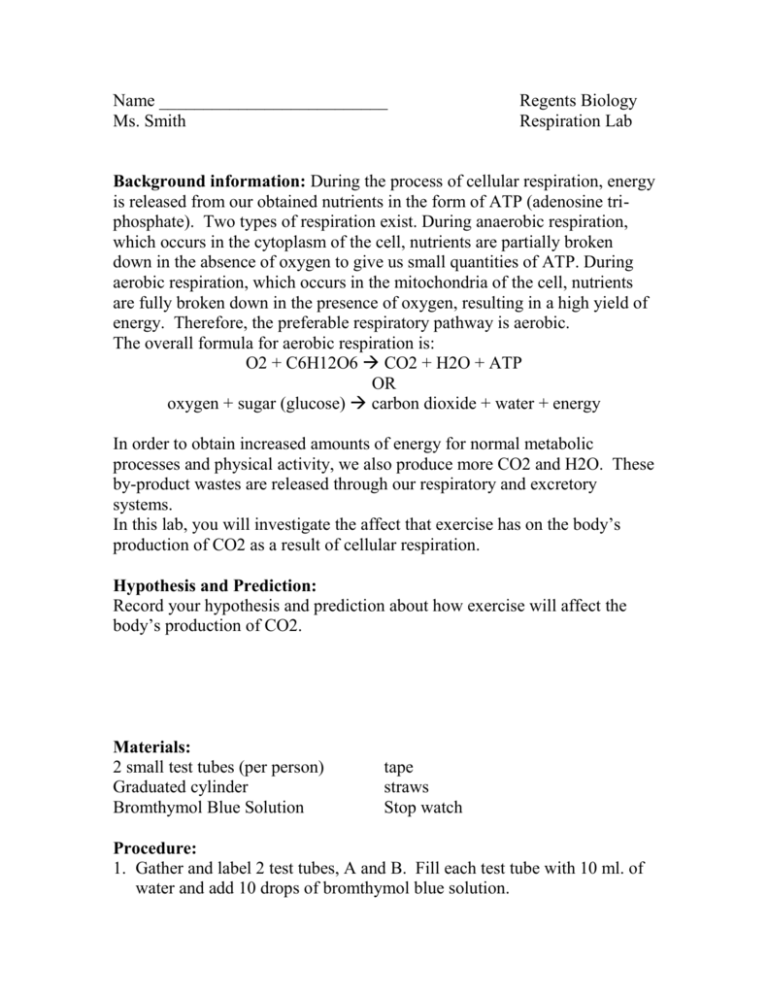
Name __________________________ Ms. Smith Regents Biology Respiration Lab Background information: During the process of cellular respiration, energy is released from our obtained nutrients in the form of ATP (adenosine triphosphate). Two types of respiration exist. During anaerobic respiration, which occurs in the cytoplasm of the cell, nutrients are partially broken down in the absence of oxygen to give us small quantities of ATP. During aerobic respiration, which occurs in the mitochondria of the cell, nutrients are fully broken down in the presence of oxygen, resulting in a high yield of energy. Therefore, the preferable respiratory pathway is aerobic. The overall formula for aerobic respiration is: O2 + C6H12O6 CO2 + H2O + ATP OR oxygen + sugar (glucose) carbon dioxide + water + energy In order to obtain increased amounts of energy for normal metabolic processes and physical activity, we also produce more CO2 and H2O. These by-product wastes are released through our respiratory and excretory systems. In this lab, you will investigate the affect that exercise has on the body’s production of CO2 as a result of cellular respiration. Hypothesis and Prediction: Record your hypothesis and prediction about how exercise will affect the body’s production of CO2. Materials: 2 small test tubes (per person) Graduated cylinder Bromthymol Blue Solution tape straws Stop watch Procedure: 1. Gather and label 2 test tubes, A and B. Fill each test tube with 10 ml. of water and add 10 drops of bromthymol blue solution. **** The presence of CO2 turns bromthymol blue to yellow or green.**** 2. Your partner will time as you blow air through the straw into the bottom of test tube A. ****DO NOT INHALE OR SUCK IN THROUGH THE STRAW **** 3. When the solution has changed color, your partner should tell you to stop. Record how long the color change took. This is your normal aerobic respiratory capacity. 4. Exercise for three minutes by running in place or performing jumping jacks. 5. Repeat steps 3 and 4 using test tube B. 6. Perform 2 more trials for test tubes A and B. Average your times for each. 7. Trade roles with your partner and repeat steps 3-6. Table 1 Test Tube A Average = Test Tube B Average = Analysis and Conclusions: 1. How did exercise affect the time for the solution to change color? What was the difference in the average time it took for bromthymol blue to change color before and after exercise? 2. What process in your body produces CO2? How does exercise affect this process? 3. Was your prediction correct? Explain your answer. 4. What are some possible reasons it may have taken longer for some of your classmates’ solutions to change color even after exercise? 5. What is the reason for heavier breathing during exercise? (Hint: Look back at the equation for cellular respiration.)
